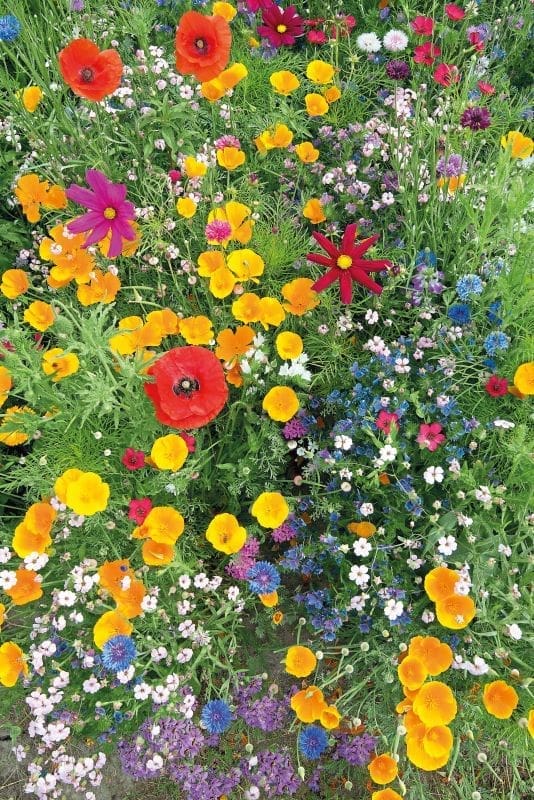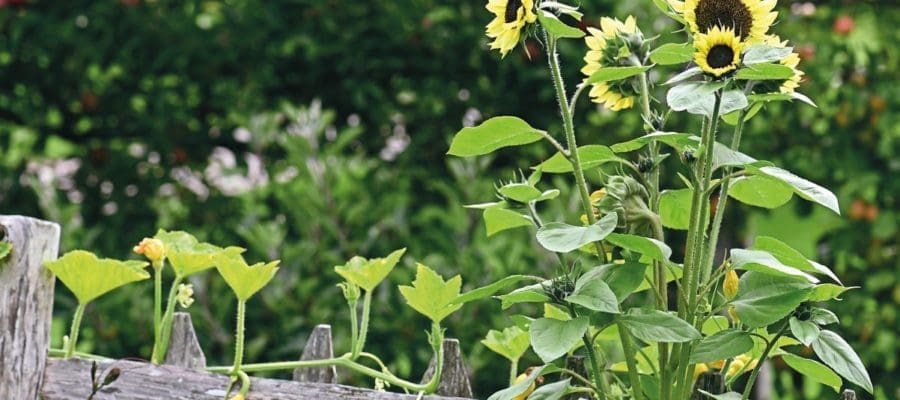All flowers have a place in our hearts and on our plots but some have particular merit, as Emma Rawlings explains
Flowers grown on allotments and veg plots have many benefits, not just to look pretty. They can be grown as a crop for cutting for the house. They can be used to add flavour and decoration to food and they have a role in attracting pollinators and other beneficial insects to the vegetable plot.
Here we have just a few examples of flowers you can grow and their uses.
Flowers for cutting
Flowers for cutting for the house were traditionally important crops on many allotments and gardens in the past and are making a comeback on many plots. There are many that are suitable and here is only a small example of what you can grow.
Cosmos
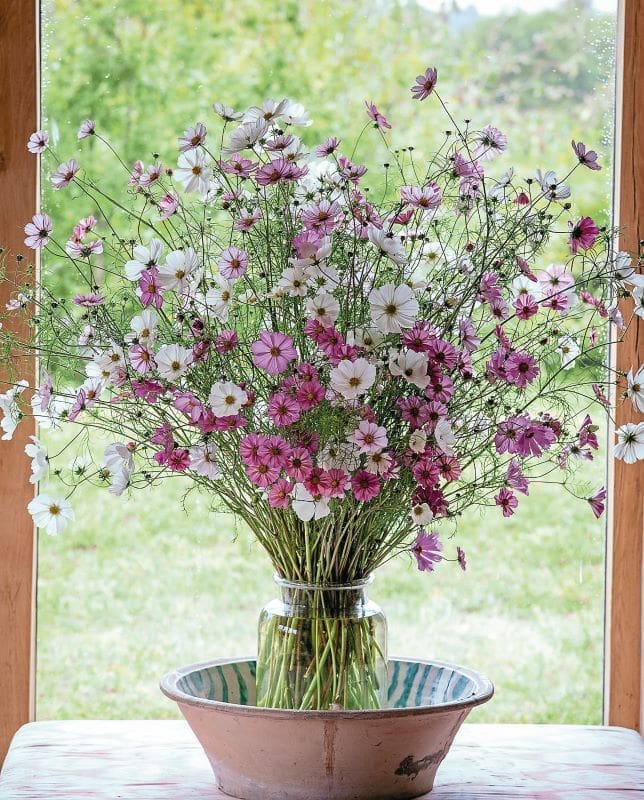
These are fantastic flowers to grow in gaps in the veg border or grow in formal rows for cut flowers. Support with some horizontally placed netting while the plants are small and allow the stems to grow through. When cutting them, cut above some buds to allow for more shoots to form and produce flowers. So many colours are available. The single flowers will be better if you want to encourage pollinators as well. ‘Cloud of Cosmos’ from the Sarah Raven catalogue comprises four varieties of cosmos including ‘Candy Stripe’, ‘Purity’, ‘Seashells Mixed’ and ‘Xsenia’. The blend gives a stunning mix of pink, white and cerise and patterned flowers.
Sunflowers
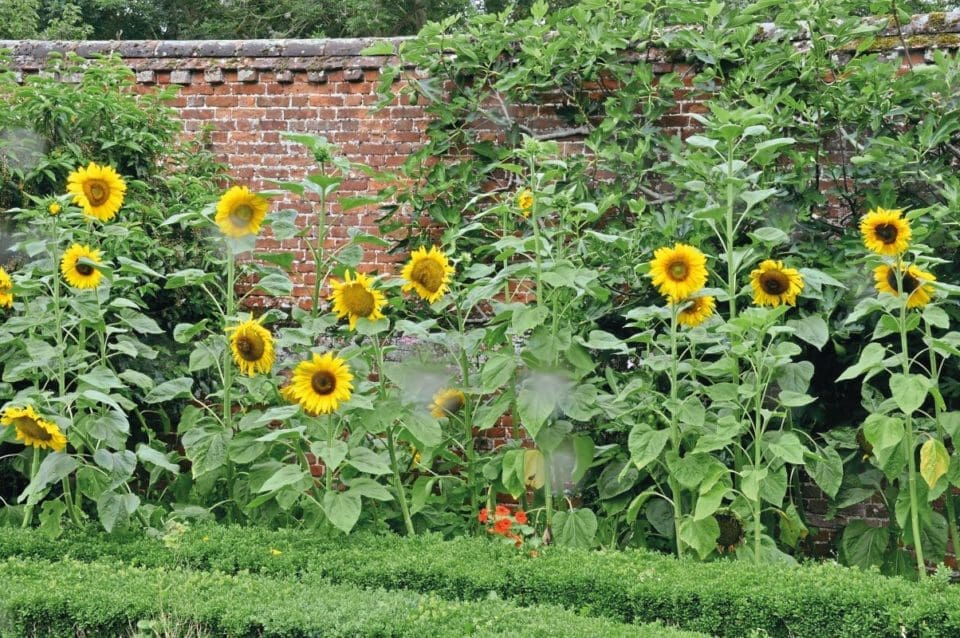
A popular flower to grow on the veg plot. The best ones for cut flowers are those that freely produce masses of flower heads rather than the very tall ones. Some are also pollen free so it is worth buying ones that will be attractive to bees and other pollinators, so they are multi-purpose. Varieties to look out for include ‘Van Gogh’ (Thompson & Morgan) which grow to about 150cm (59in) high and are the perfect cut flower for the house. From Mr Fothergill’s seeds try sunflower ‘Vanilla Ice’, which is a similar height and has smaller pale lemon flowers but plenty of them, and ‘Sunburst’, which is taller but has a mixture of colours including traditional yellow but there are also those with orange centres and yellow tips and some with a pinkish blush.
Sweet peas

These are a great addition to the veg patch, producing masses of often fragrant flowers if you pick the right varieties. All they need is a simple wigwam of canes with some netting wrapped round to give the tendrils some support and you will be rewarded with many bunches of sweet peas for the house. The more you pick the more flowers will come. There are so many colours to choose from as well as mixtures of colours. They can also be grown with runner or French climbing beans to add some extra colour.
Wonderful white
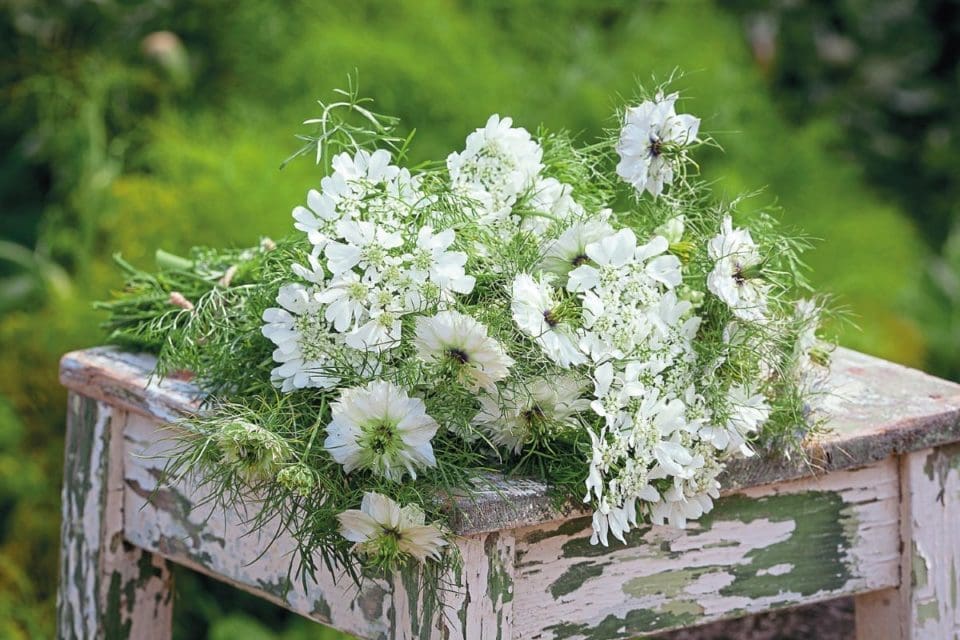
Photo: Jonathan Buckley
A wonderful choice of white flowers for cutting include the annual blooms of ammi, nigella and orlaya. You can buy seeds of these individually or altogether in the Mont Blanc Cut Flower Collection from Sarah Raven. They can be direct sown under cover in March or direct in the ground in April to May or September for overwintering.
Dahlias

If you have space then several dahlia plants can produce some amazing cut flowers from late summer into autumn. You can grow some from seed and if sown early enough in spring under cover you will get flowers by late summer. A mix called dahlia ‘Bishop’s Children’ (many seed suppliers) is a good one as it contains different varieties, giving you a range of colours set against lovely dark foliage. The flowers are single and so will attract pollinators too. The petals are also edible in theory although probably best used for decorative purposes.
Antirrhinums
There are many colours to choose from but pictured is one called ‘Brighton Rock’, a pretty mixture of pink snapdragons as they are also called. If this half-hardy annual is sown in early spring it will produce flowers for cutting for about three months during the summer. Cut to just above a pair of leaves and more flowering shoots will grow. Available from the Sarah Raven catalogue.

Carnations

Carnations last a very long time in water so make perfect cut flowers. Some of the really large carnations are best grown under cover but Dianthus caryophyllus ‘Giant Chaubaud Mixed’ is a great mix for the flower border or grown in rows next to your veggies. It will produce flowers to cut from an early spring sowing. (Thompson & Morgan)
Traditional cut flowers
The following are also classic allotment-grown cut flowers: chrysanthemums, larkspur, sweet Williams, wallflowers, gladioli, Dutch iris, ranunculus, anemones
Edible flowers
There are many edible flowers you can grow but here is just a taster.
Calendula

Also known as pot marigolds, these wonderful hardy annuals can be direct sown on the plot in April or May and they will produce their wonderful blooms by mid-summer. The predominant colour is orange but the varieties are numerous and so different shades of orange are possible, even creamy white. You can get double flowers although the singles will more likely attract pollinators. All varieties are just so cheery to see on the plot and can be cut too for a vase. The petals are also edible and traditionally added when bread making or to top a salad. The petals can colour rice dishes too.
Borage
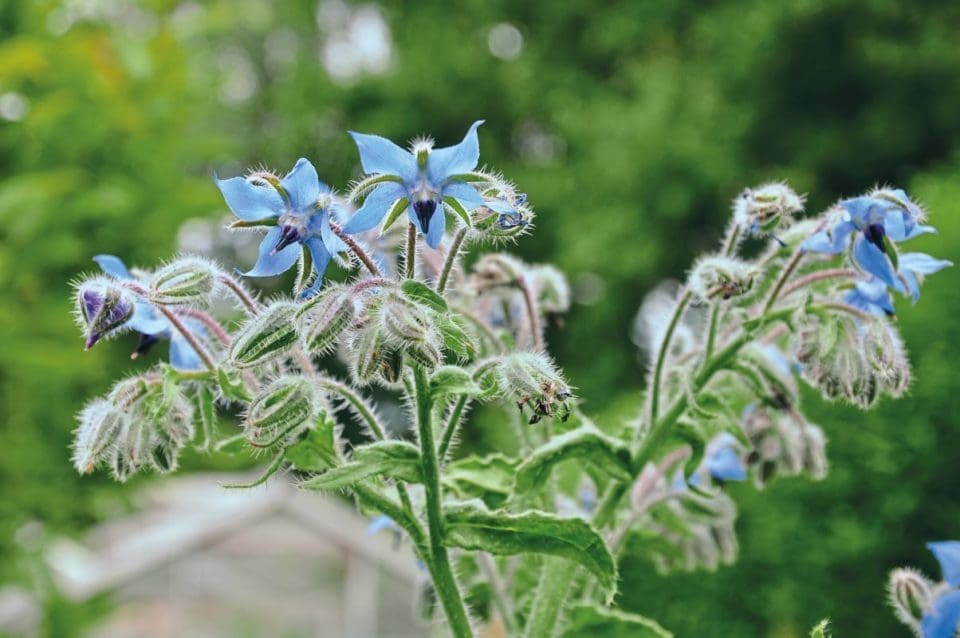
Traditionally the stunning blue flowers of borage are used in drinks and one way is to freeze them in ice cubes for a decorative splash to your drinks. It has so many other benefits and is a well-known medicinal plant but also a perfect plant to grow if you want to attract bees to your plot. Honeybees just love it. Leaves of borage will be helpful in the compost bin or laying between crop plants as a mulch. As they break down they will add useful trace elements. It is a hardy annual so can be sown direct every year.
Viola
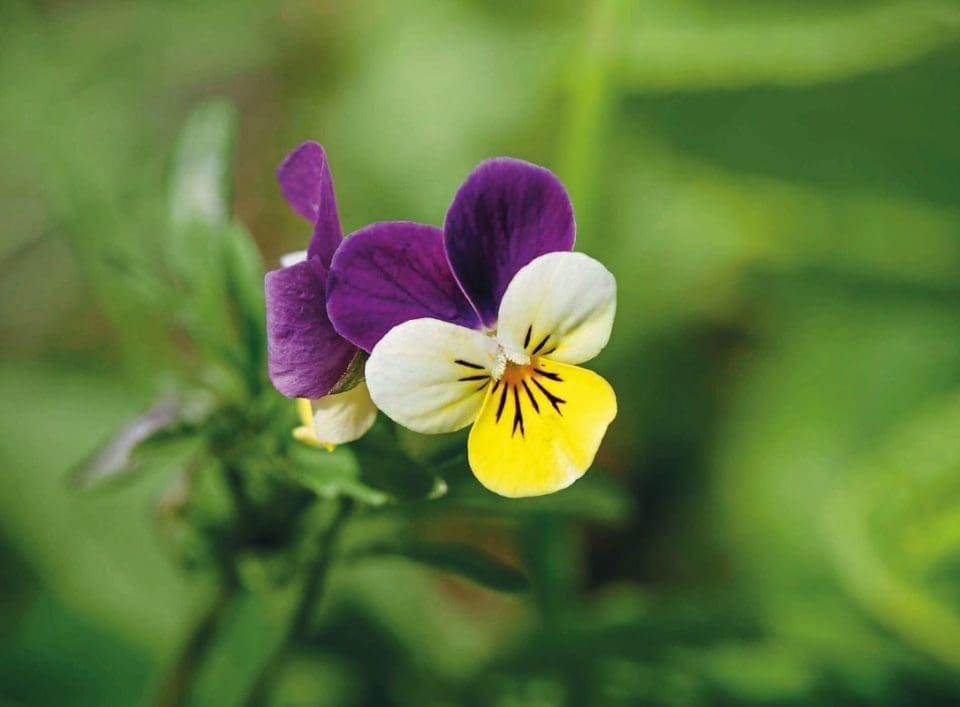
Grow some heartsease (Viola tricolor) for great edible flowers. They are such pretty little purple and yellow flowers. They look great topping a salad or pudding and will flower later in the autumn and winter if sown later.
Lavender
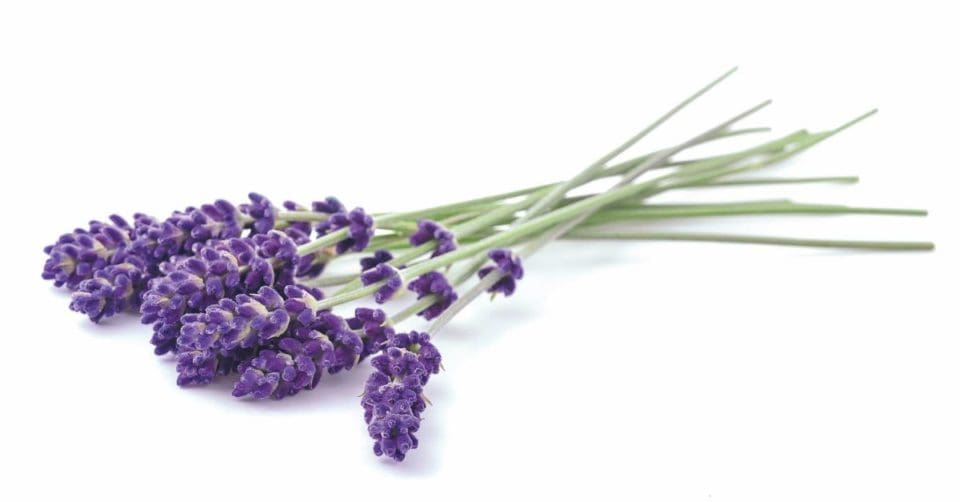
What’s not to love about lavender? These small shrubby perennial plants produce their spikes of mainly mauve flowers in summer attracting lots of bees, butterflies and other pollinators. The hardiest ones to grow are the English lavender not the French but all prefer a well-drained soil. The flowers make a great decoration and flavouring for food. Can be grown from seed but buying small plants is a quicker way to grow these.
Nasturtium
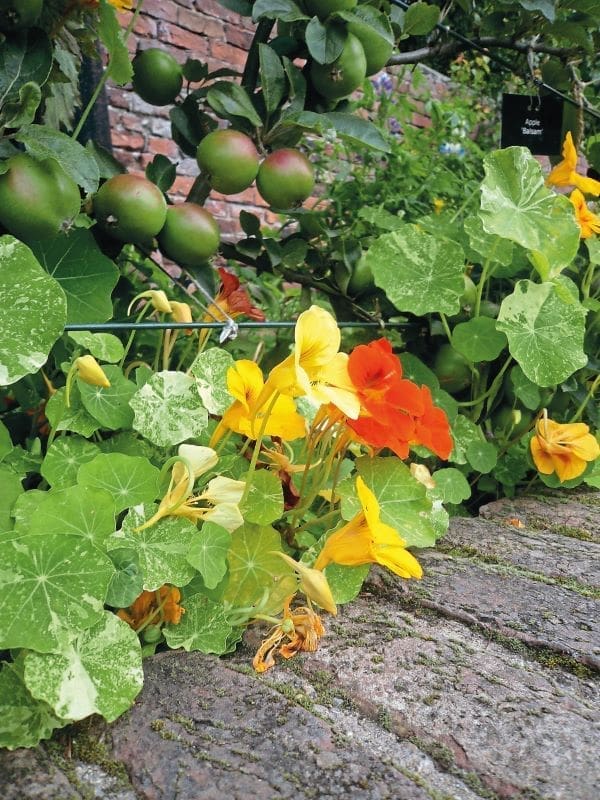
The nasturtium is a most flamboyant flower that comes in fiery colours of reds, orange and yellow and everything in between and the leaves can be different shades too, with some very dark ones and some marbled with variegation. They can climb or rather scramble or be compact in nature. The flowers and leaves are edible and so are the green seed pods which can be stored in brine and are similar to capers. They will self-seed so you may have some pop up the following year which is a bonus.
All year edible flower seed collection
This special seed mix from Sarah Raven includes a collection of edible flowers that can provide pickings year-round. The mix includes Viola tricolor ‘Heartsease’ (winter-spring), calendula ‘Indian Prince’ (spring-summer), borage (summer) and nasturtium ‘Black Velvet’ (summer to winter). Note in the picture is anchusa which is not included in the collection.

Photo: Jonathan Buckley
Blooms for beneficial insects
The following would enhance any veg patch, either edging veg beds or leaving a space at the end for a mixture of these flowers. They will attract lots of pollinators and beneficial insects to your plot.
Musk mallow
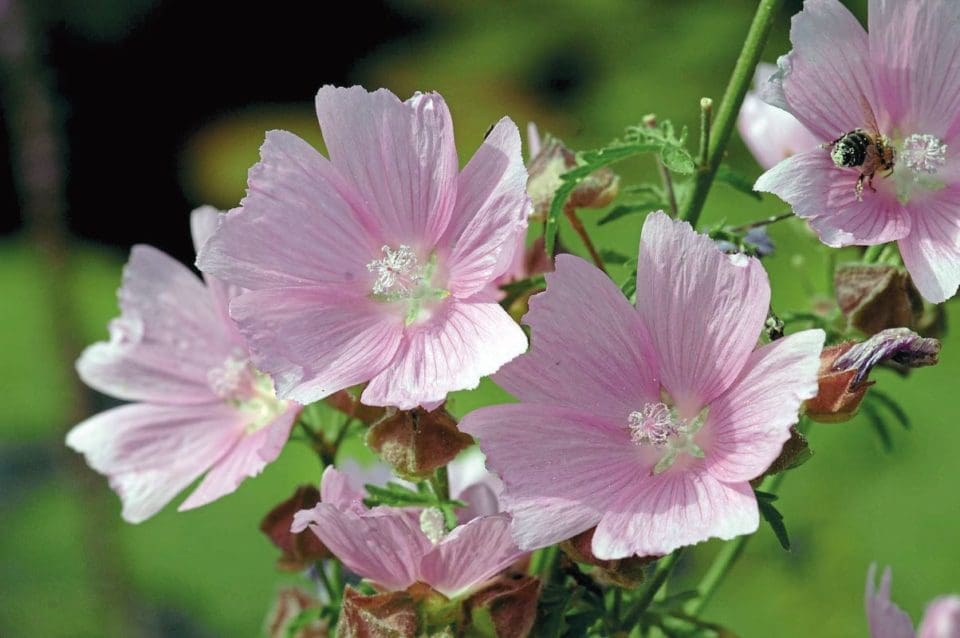
This is a perennial with pretty light pink flowers. It is a wildflower but has often been used as a garden flower too. It can grow up to 70cm (27in) high and the flowers are packed with pollen and nectar, making it a really important plant for pollinators including different types of bees. A white flowered dwarf form (Malva moschata ‘Snow White’) is also available that grows to about 40cm (16in) high. (Thompson & Morgan)
Alyssum (lobularia)

A popular bedding plant for edging beds as it forms a low carpet (height 10cm/4in) smothered in white flowers. It needs to be sown under cover in about March in a propagator or on a warm windowsill and then seedlings transplanted into pots or cell trays to grow on before planting out late May or June. It is a diminutive plant that packs a punch and could be squeezed into the smallest plot without affecting veg yields. As a bonus, the leaves and flowers are actually edible with a kale-like flavour so a few could be sprinkled on a salad. The flowers are full of nectar and will attract bees and other pollinators to your plot.
Limnanthes (poached egg plant)

Like alyssum this is also a ground-hugging little plant and is covered in flowers, the petals yellow tipped with white. Reminiscent of an egg – hence the common name for it. The flowers are a magnet to pollinators and hoverflies which will feed on any aphids on the plot so it’s a useful plant to grow and can be squeezed in somewhere on the smallest of plots. It is a hardy annual so can be sown direct into the soil in April or you could start off earlier in pots in a greenhouse. It is possible to also sow some in autumn to overwinter for earlier flowering the following summer. It may self-seed once established.
Fennel or dill
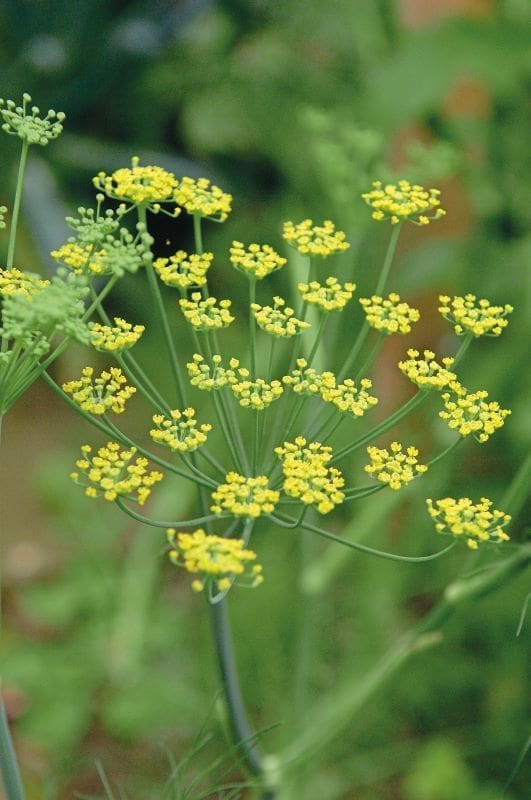
These two are in the same plant family and are known for their lovely soft feathery foliage. They may already be grown on the veg plot or the herb patch and so warrant a mention for their multi-purpose use. They produce really attractive umbels of tiny yellow flowers and you will soon spot a mass of pollinators flocking and almost queuing up to land on the blooms. Hoverflies of all descriptions are particularly common visitors and, of course, these are great feeders on aphids.
Yarrow

There is a wild white form of yarrow (achillea) but you can get an amazing range of coloured forms now for the garden or veg patch. Once this perennial plant is established it will die back every winter but regrow in spring and produce a mass of flowers that can be cut for the house. Leave some blooms to draw in the beneficial insects like hoverflies and ladybirds. Look out for a seed mix called Achillea millefolium ‘Summer Pastels’ which produces flowers in different hues of pink. (Thompson & Morgan)
Annual bee mix
This seed mix includes many popular hardy annual flowers such as poppies, Californian poppies, calendula and cornflower plus many more. It can be sown direct in about April/May time for flowers mid to late summer. The bees and other pollinators will love it. (Kings Seeds)
